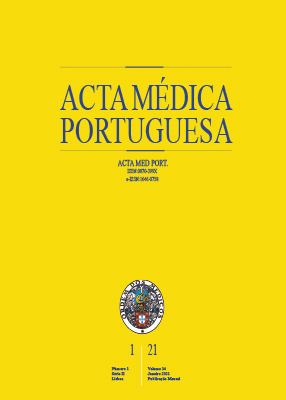Inflammatory Activity and Treatment Response in Pediatric Compared to Adult Multiple Sclerosis: A Pilot, Retrospective and Observational Study of the First Year After Diagnosis
DOI:
https://doi.org/10.20344/amp.12486Keywords:
Child, Magnetic Resonance Imaging, Multiple Sclerosis, RelapsingAbstract
Introduction: Pediatric-onset multiple sclerosis may contrast with adult-onset multiple sclerosis, in terms of disease activity. We aimed to determine differentiating features between pediatric-onset multiple sclerosis and adult-onset multiple sclerosis, at diagnosis and after one year under disease modifying therapies, and analyse the attainment of the status of “No Evidence of Disease Activity” between groups.
Material and Methods: We analyzed demographical, laboratory, clinical and imaging features of patients with relapsing-remitting multiple sclerosis diagnosed at our center, according to the McDonald’s 2010 criteria, with ≥ 1 year under disease modifying therapies and with available magnetic resonance imaging scans at diagnosis and one year after disease modifying therapies initiation. Patients were paired according to gender and disease modifying therapies in use. “No Evidence of Disease Activity” status was assessed, and differences were studied.
Results: Fifteen pediatric-onset multiple sclerosis (aged ≥ 8 and < 18 years) and 15 adult-onset multiple sclerosis (≥ 18 and < 55 years) patients were recruited. We found a statistically significant difference in the number of T2 weighted image diffuse lesions/with poorly defined borders (p = 0.015). The mean expanded disability status scale score after one year under disease modifying therapies was lower in the pediatric-onset multiple sclerosis group (1.6 ± 0.8) compared to the adult-onset multiple sclerosis group (2.3 ± 0.8; p = 0.032). Nevertheless, no differences were found regarding the percentage of cases achieving “No Evidence of Disease Activity” in either group.
Discussion: Although there is an empirical impression about the difference in inflammatory activity between pediatric-onset multiple sclerosis and adult-onset multiple sclerosis, it was not possible to corroborate it in our study. Nevertheless, this was an exploratory and retrospective analysis of a small sample of patients, identifying variables in which such differences appear to be most important.
Conclusion: Extensive studies of children, adolescents and adults with multiple sclerosis will be needed to categorize the clinical and radiological differences that allow the identification of drug response biomarkers in the early stages of the disease.
Downloads
Downloads
Published
How to Cite
Issue
Section
License
All the articles published in the AMP are open access and comply with the requirements of funding agencies or academic institutions. The AMP is governed by the terms of the Creative Commons ‘Attribution – Non-Commercial Use - (CC-BY-NC)’ license, regarding the use by third parties.
It is the author’s responsibility to obtain approval for the reproduction of figures, tables, etc. from other publications.
Upon acceptance of an article for publication, the authors will be asked to complete the ICMJE “Copyright Liability and Copyright Sharing Statement “(http://www.actamedicaportuguesa.com/info/AMP-NormasPublicacao.pdf) and the “Declaration of Potential Conflicts of Interest” (http:// www.icmje.org/conflicts-of-interest). An e-mail will be sent to the corresponding author to acknowledge receipt of the manuscript.
After publication, the authors are authorised to make their articles available in repositories of their institutions of origin, as long as they always mention where they were published and according to the Creative Commons license.









